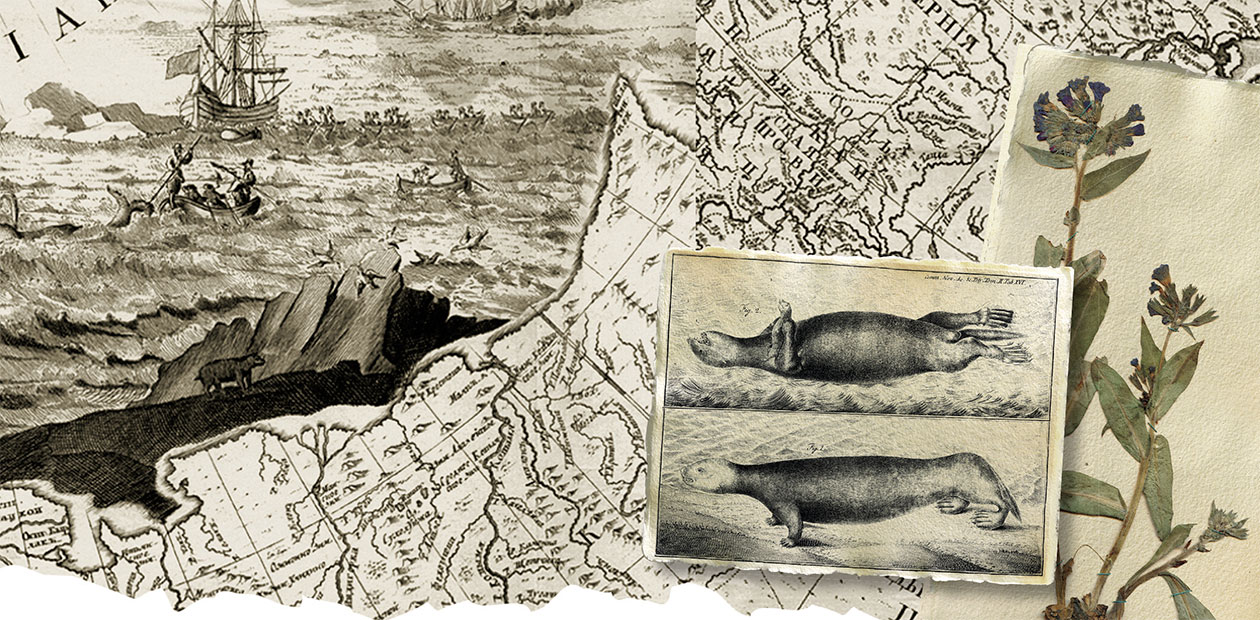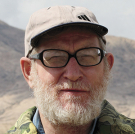At the Intertwining of Times and Fates: Scientist and Herbalist Georg Wilhelm Steller
Some people always feel the joy of meeting unknown herbs throughout their life. However, most people do not even know about the science of botany, which traces its roots back to unthinkably ancient times. Indeed, the primal man had no task as important as acquiring knowledge about the surrounding world, and that was, first of all, the plant world.
And there have always been people who knew more than the others and passed on their knowledge to their followers. The passing of the torch of knowledge has never stopped; it continues to this day and will continue forever, and so will the arabesque drawn by the fine lines of botanists’ fates, which intertwine into one endless ornament of science.
In the previous issue, we told our readers about Johann Georg Gmelin, a Russian academician of German origin, whom Carl Linnaeus called the “father of botany.” The hero of our story this time is another botanist, an adjunct of St. Petersburg Academy of Sciences, German scientist and physician Georg Wilhelm Steller. Both of these great naturalists were members of the Academic Detachment of the Second Kamchatka Expedition, a grandiose research project of the 18th century, which set the stage for a broad scientific study of the natural riches of Siberia, including its plant world
The 18th-century Europeans perceived the vast expanses of Russia as terra incognita, an unknown land where one could get rich and make one’s most ambitious dreams come true. And scientists were no exception. After all, Emperor Peter I himself, who laid the foundations of imperial science, said in his speech dedicated to his election as a member of Paris Academy of Sciences in 1721: “There is nothing we desire more than to make science flourish through our diligence.”
The Academy of Sciences and Arts, established in St. Petersburg in 1724, offered very good terms for invited scholars. Founded by the state, Petersburg Academy was on the state’s payroll while similar academic institutions in European countries had to take care of themselves financially.
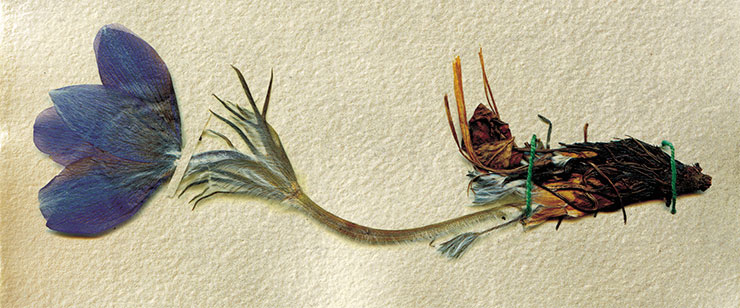
The duties of academicians were simple: to deliver four hours of public lectures a week, to present their “judgments” to members of the Academy, to attend academic meetings twice a week, and, of course, to carry out assignments related to their field of science. The contract was signed for five years; the academicians (professors) were paid a decent salary, and, on top of that, they were provided with accommodations, candles, and firewood at the expense of the Academy. If the contract was extended, one could hope for a solid increase, and during an expedition, the professorial salary was doubled.
In the war-ravaged Europe of that time, the professors of the famous French Academy were subsisting on tuition fees paid by their students, and the Prussian Academy made its living from calendar sales and charitable events. Perhaps that was why Bernoulli-the-father sent his brilliant sons to the barbarian Moscovia with the farewell words: “…it’s better to put up with the harsh climate in a land of ice that welcomes the muses than to die of hunger in a country with a temperate climate where the muses are offended and despised.”
Another motive for the enterprising Europeans was treasure hunting. They saw Moscovia, or more precisely, Siberian Tartaria, as the shortest route to India, to the riches of the East.
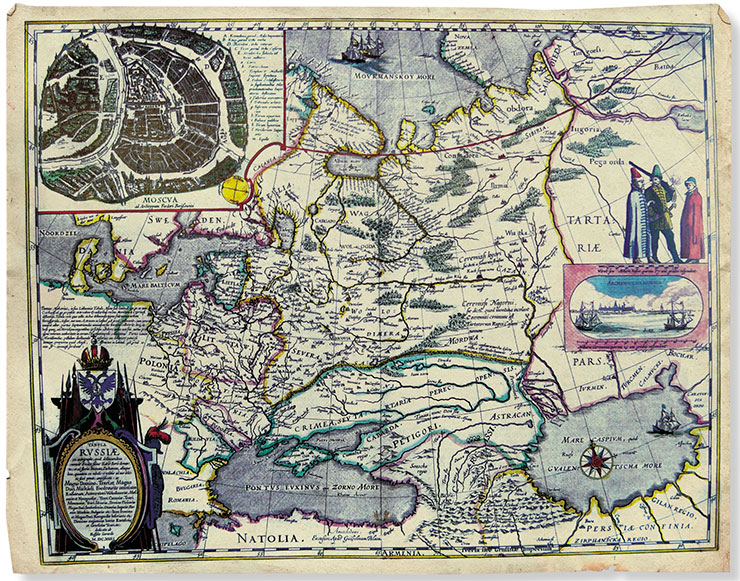
The 17th and 18th centuries saw a surge in geographical espionage. Let me give just a few examples. In 1671, Jacob Reitenfels, a native of Courland, stole from the Ambassadorial Order, through the translator Andrei Vinius, information about the road from Moscow to Beijing, which he resold to the Papal College in Rome. Two years later, Joachim Skultetus, an ambassador of the Brandenburg court, “obtained” a copy of the report written by the diplomat and traveler Fyodor Baikov about his trip to China.
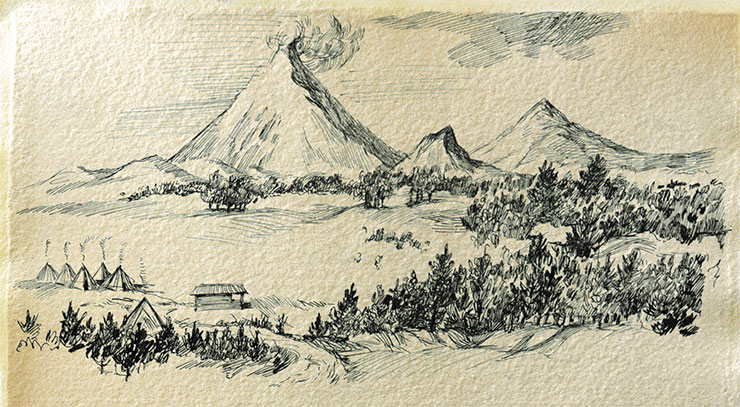
Stockholm also took hold of a top-secret map, A Drawing of All Siberia to the Chinese Kingdom and to the Nikan Kingdom (Nikanskoe Tsarstvo), which was created in 1672. The description for this map, entitled A Copy of the Drawing of the Siberian Land, told about the new lands of the Siberian State and at what time and by what chance the Muscovite State took hold of it and what the state-of-affairs in that land was and made special mention about the possibilities of sea navigation from the mouth of the Kolyma River to the mouth of the Amur River.
And all these people eulogized the untold riches of Siberia, which attracted not only mavericks but also naturalists, who saw in this mysterious land an opportunity to satisfy their scientific curiosity and to make new discoveries.
To “a land of ice that welcomes the muses”
The year 1732 was marked by two events important for the Russian science. In the German city of Halle, a 23‑year-old candidate of theology Georg Wilhelm Steller, who became interested in the science of botany, began to seriously think about long-distance travels. He only had not decided yet where to go: to America or to Siberia. Both destinations were attractive and (who knows?) even lucrative.
In December of the same year, a 22‑year-old Stepan Krasheninnikov, a student at Moscow Slavic–Greek–Latin Academy (better known as the Zaikonospassky School Monastery), was sent to St. Petersburg among the five most talented and scholarly capable students to participate in the Second Kamchatka Expedition. Several years would pass until the paths of these young people would come into contact, but the threads of their destinies had already been woven into a single strand. And each of them had a long and thorny path ahead to fulfill his hopes.
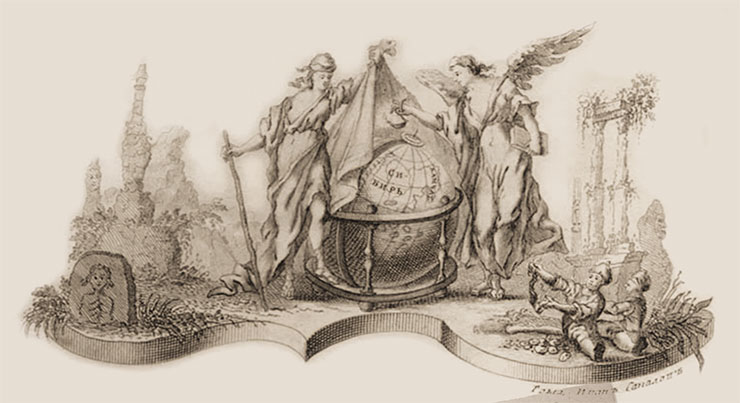
Four northern detachments were organized in order to explore the opportunities offered by the Northern Sea Route and to study the Arctic Ocean and the Arctic coast of Asia. The first Pacific detachment sailed to the shores of North America on two packet ships: St. Peter (led by the captain commander himself) and St. Paul.
On both ships there were members of the Academy of Sciences: Adjunct Georg W. Steller on St. Peter, who wrote a description of this trip, and Professor De L’Iisle de la Croyère on St. Paul. Having lost each other in the fog, both ships reached the shores of America independently but almost simultaneously and discovered several islands (Kayak Island, Kadyak Island, Shumagin Islands, Commander Islands, Alexander Archipelago, Aleutian Ridge, etc.).
During the return voyage and winter stay after the shipwreck on the island, later named after Bering, the captain commander died and so did 45 of the 77 crew members of St. Peter. In the face of the numerous difficulties and hardships, Steller showed his best qualities, serving as a doctor without stopping his scientific studies. In particular, during the winter stay, he discovered, described, and sketched a rare animal from the order of sirens (Steller’s sea cow) and the spectacled cormorant, which were soon completely exterminated. St. Paul’s crew also suffered heavy losses: 15 of its members went missing on one of the islands of the Alexander archipelago, where they were probably killed by the Indians; 6 more people, including the astronomer De L’Iisle de la Croyère, died of scurvy.
Georg Wilhelm Steller was born in 1709 in the small Bavarian town of Windsheim, in a large family of a cantor and organist of St. Kilian Church. He began to study at the age of five, and from an early age, he stunned placable burghers with his learnedness.
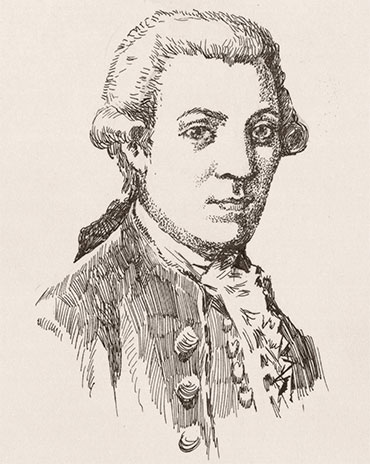 The best student at the local gymnasium, he entered in 1729 the University of Wittenberg, one of the most important theological centers in Europe. Steller even received a scholarship from the town of Windsheim; however, due to a strong fire of 1730, which caused great damage to the town, the scholarship payments ceased. In Wittenberg, Steller not only studied theology and practiced rhetoric but also began to seriously study medicine and botany.
The best student at the local gymnasium, he entered in 1729 the University of Wittenberg, one of the most important theological centers in Europe. Steller even received a scholarship from the town of Windsheim; however, due to a strong fire of 1730, which caused great damage to the town, the scholarship payments ceased. In Wittenberg, Steller not only studied theology and practiced rhetoric but also began to seriously study medicine and botany.
Meanwhile, he came to realize that his home university could no longer satisfy his craving for knowledge. After some hesitation, he chose the faculty of theology at the University of Halle near Leipzig, one of the cradles of the German Enlightenment and also the city where Laurentius Blumentrost, the first president of Petersburg Academy, received his education. At the University of Halle, Steller attended lectures on zoology and medicine and also continued his studies in botany, and back then this science focused on the healing properties of plants.
As a result, Steller successfully passed an examination to the famous German botanist M. M. Ludolph, which would allow him to obtain a position as a certified lecturer. However, his hopes of getting a full-time job did not materialize. Neither in Leipzig, nor in Jena, nor Halle – he could not find work anywhere.
Steller’s path to Russia was not easy. In the summer of 1734, Russian troops were stationed in Danzig: Empress Anna Ioannovna was resolving “Polish issues” by expelling King Stanislav, elected by the Sejm, and placing August III onto the throne. Meanwhile, the young naturalist with an empty wallet and excellent letters of recommendation from Privy Councilor Hoffmann and Professor Ludolph was looking for a job in his specialty. But letters of recommendation were of little worth in Germany.
In Danzig, Steller got acquainted with the future count Pyotr Petrovich Lassi (Peter von Lacy), an Irishman in the Russian service, who became one of the most successful Russian commanders of the 18th century. Lassi himself had a keen interest for natural history and highly appreciated Steller’s competence. In Danzig, people were talking a lot about the great accomplishments of the Germans, not only at court but also in science. Moreover, Empress Anna’s minion Ernst Johann von Biron, a Courland nobleman, who was in charge of almost all the state affairs, indulged his fellow countrymen. So Steller decided to go to the remote Russia as a doctor on a ship that transported sick and wounded Russian soldiers to their homeland.
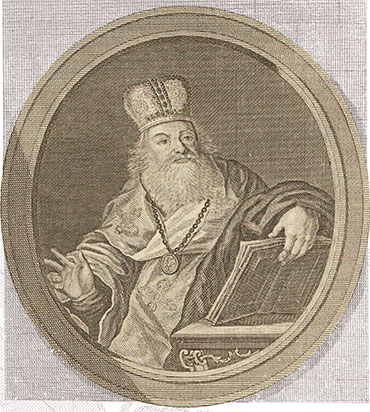 At that time, Stepan Krasheninnikov was on his way as a member of the Academic Detachment, together with Academicians Johann Georg Gmelin and Gerard Friedrich Miller. At the end of the summer of 1734, he arrived in the town of Kuznetsk, and it was him who made the descriptions of the Kolyvan factories in Altai. At the instruction of the academicians, he described in detail in the Road Journal the detachment’s voyage along the Tom River to the town of Tomsk, carefully recording the abundant settlements of both Russians and non-Russians along the river banks. Perhaps, it was here that he experienced cane beating from the arrogant Miller, who would remember that even when his former student became a full academician.
At that time, Stepan Krasheninnikov was on his way as a member of the Academic Detachment, together with Academicians Johann Georg Gmelin and Gerard Friedrich Miller. At the end of the summer of 1734, he arrived in the town of Kuznetsk, and it was him who made the descriptions of the Kolyvan factories in Altai. At the instruction of the academicians, he described in detail in the Road Journal the detachment’s voyage along the Tom River to the town of Tomsk, carefully recording the abundant settlements of both Russians and non-Russians along the river banks. Perhaps, it was here that he experienced cane beating from the arrogant Miller, who would remember that even when his former student became a full academician.
Krasheninnikov was the first to discover the now-famous Pisanitsy petroglyphs on the Tom River: “A stone with painted figures stands by the river, rising as high as about 10 sazhens… In all these places, deer, elk, horses, people and fish are carved.”
The researcher also described in detail the features of everyday life of peoples that had almost disappeared, such as the southern Altaians (Tyuliber Tatars). Thus, on September 28, 1734, he wrote in his journal: “The yurts of these Tatars are very poorly built; some are like Russian huts, and others are made of boards, round in shape and top in what resembles a tower; all of them are so covered with earth that from afar one could in no way recognize them as yurts; the doors are so small that a tall man almost has to crawl on his knees to get inside. And they have no floors, and in the middle of them, a hearth is made, in which they keep fire all the time, day and night, winter and summer…”
Thus, by the time Steller arrived in Russia, this classmate of Mikhail Lomonosov had become an experienced geographer and naturalist.
On the banks of the Neva River
Nobody welcomed Steller in St. Petersburg. He also remained penniless. The rosy dreams with which he reveled in Danzig collapsed under the pressure of the gray and hopeless reality.
Sad and depressed, the young scientist would come to the academic gardens, which were really good even by European standards. It was there that he met a gardener Hans, who promised to help him. Soon such an opportunity presented itself. Gmelin, Steller’s future colleague, wrote “…soon after Herr Steller arrived in St. Petersburg, Theophan, the former Archbishop of Novgorod, took him into his house for his cheerful disposition, and for treating his sick service-doers he gave him an annual salary” (quoted from Pekarskii, 1870).
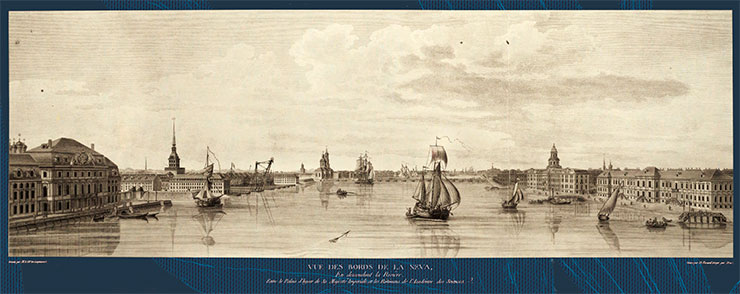
Of course, by the year 1734, Feofan/Theophan Prokopovich, who was not only a hierarch of the Orthodox Church but also a writer, poet, mathematician, and philosopher, had lost the enormous influence he had under Peter I, when he was Vice President of the Ecclesiastical College. Nevertheless, he still had a very high authority. It was Feofan who helped Lomonosov get on the coveted list of students sent abroad to study. He favored science, so Steller believed that Feofan’s patronage would help him advance in his academic career.
The Academy of Sciences had the Kunstkamera as its integral part. Its botanical collection included not only a rich herbarium but also botanical drawings, which were created both in the field and from drafts and sketches in St. Petersburg. The Kunstkamera kept with special care the watercolors published in the work by a Petersburg professor J. Ch. Buxbaum Plantarum minus cognitarum complectens plantas circa Bysantium et in Oriente observatas… Centuria 1–5 (1728–1740), the first scientific publication of St. Petersburg Academy of Sciences (Kopaneva, 2006)In the 18th century, healers, who knew many secrets of their patrons, were the most trusted people of the nobles. Suffice it to recall the influence enjoyed by the court physician Johann Lestocq during the reign of Empress Elizaveta Petrovna; he became a count and a privy councilor-in-deed. As for Steller, the archbishop, known for his stern disposition, apparently took a liking for the young German and treated him paternally, turning a blind eye to his faults in service caused by his frequent absences to study the flora of St. Petersburg’s environs.
In the mid-twentieth century, an autograph of a humorous poem was found in the library of St. Petersburg Seminary. This poem was written by Prokopovich in Latin, entitled In moram Stelleri medici (“In Waiting for Steller’s Potions”). In the poem, while Steller is looking for healing herbs, his patient dies in terrible agony. His other patients are clinging to life with all their might and cursing the tardy doctor. Finally, he arrives, angry at Fate for daring to get ahead of him. This poem shows Prokopovich’s warm attitude towards his doctor, who was diligently engaged not only in the treatment of his patients.
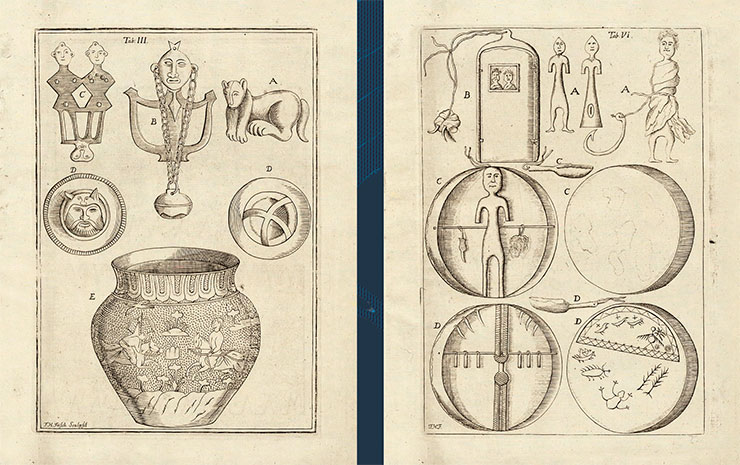
Steller met many influential people at the Academy, and he listened to the stories told by worldly-wise ones. In Feofan’s house, he met Daniel Gottlieb Messerschmidt, a German doctor and botanist in the Russian service, who, by order of Peter I, had traveled to Siberia “to search for all kinds of rarities and apothecary things: herbs, flowers, roots and seeds and other articles for medicinal compositions.” Prokopovich took care of Messerschmidt, who had almost gone blind by that time, lived in distressed circumstances, and visited the archbishop accompanied by his young wife. Steller could listen for hours to the traveler’s stories about “the magnificence of nature and the horrors of the barbarous country.”
Steller also met Johann Amman, a professor of botany and natural history and also a medical doctor. He helped him in his work in the Botanical Gardens of the Academy on the Vasilievsky Island, which was founded by Amman, and collected herbariums for him in the neighborhoods of the Russian capital.
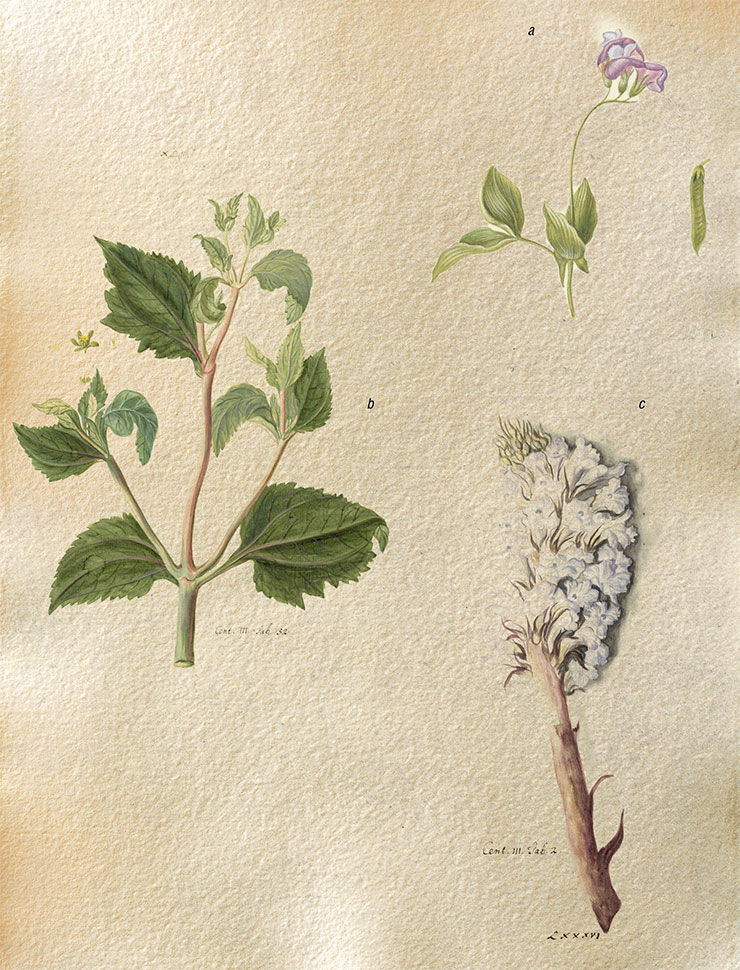
In 1735, under Feofan’s patronage, Steller appeared before Baron Johann Albrecht Korf, not only a distinguished royal courtier but also a broadly educated man and bibliophile, who held the office of President of the Academy. This meeting decided the further fate of the young German.
Adjunct of natural history
On July 28, 1736, Korf informed his advisor Ivan Danilovich Schumacher that “a physician named Steller, who was with His Eminence the Archbishop of Novgorod, expressed a desire to be sent to Kamchatka as a botanist, and he was told that unless anyone else was appointed to this position, he would be taken into consideration upon the Archbishop’s recommendation.”
Although Empress Anna Ioannovna permitted to send two more scientists to follow Gmelin, Miller, and De L’Isle de la Croyère as early as in 1735, Schumacher was holding the line. The contract with Steller was concluded only in February 1737, when the academicians were convinced, after sufficient testing, that the future adjunct of natural history was sufficiently competent in botany and demonstrated extraordinary diligence in the study of plants and other subjects of natural history.
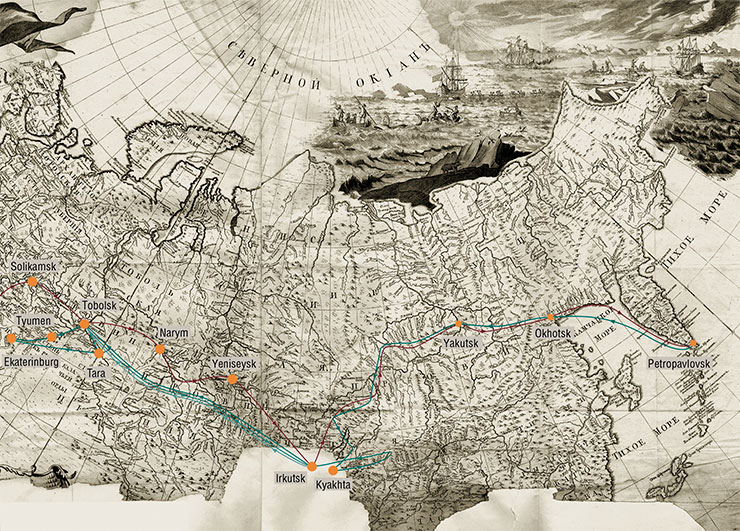
Despite the impatience of the newly-made “assistant professor,” he had to wait for the Senate’s decision regarding his travel to Kamchatka until August. Then, Steller’s love affairs did not allow him to immediately set out on his journey. He married Messerschmidt’s widow and hoped that his beloved Brigitte, as a faithful mate, would accompany him on his dangerous journey. However, having reached Moscow, his young wife flatly refused to go any further. So Steller’s journey did not begin until the following year.
One can only guess why Steller’s wife did not follow him. Some say that “she found more pleasure in staying in St. Petersburg, surrounded by her admirers” (quoted from Pekarskii, 1870). But the main reason could have been her painful impressions from the road.
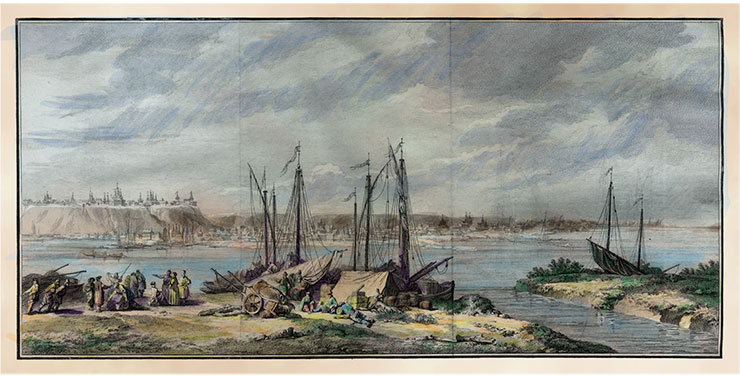
Here is how Lady Jane Rondeau, the wife of an English minister with the Russian court, describes this journey in her Letters from a Lady…: “We set out on the 5th of March in sledges; they are like a cradle made of wood, and covered with leather. You lie down on a bed dressed and covered with furs; they hold but one person, which makes it very disagreeable, as you have nobody to speak to. We traveled night and day, and arrived here [in Moscow] on the 9th. You will say, I skip over the journey very fast, but what shall I say? Our accommodation was one little smoky room, where we stopped to change horses, and eat what we brought with us: the people were civil to the utmost of their power, but one really sees human nature so debased, and the poor wretches so low and poor, that they seem to have only the figures of human creatures” (Jane Vigor (Rondeau), Letters from a Lady, who Resided Some Years in Russia, to Her Friend in England, London, 1777, pp. 9–10).
So, it is not surprising that having ridden from St. Petersburg to Moscow and vividly imagining the journey ahead, ten times longer than the one she had made, Steller’s wife refused to go any further.
“Capable of doing the great deed”
By the time Steller left for the expedition, he was 29 years old. What was he like at that time? Of course, he was a very talented naturalist, but as a person, he was, most likely, a man of quick-tempered disposition. Steller was filled with the importance of his commission, but he was not the first one. And this could not but affect his future behavior.
The journey was not smooth. At first, waiting for the expedition freights, he lingered for a long time in the town of Solikamsk (Perm province), where the philanthropist and lover of botany Grigori A. Demidov, a student of Carl Linnaeus himself, founded in his family estate one of Russia ‘s first botanical gardens. In Tomsk, Steller fell seriously ill, and it was only on January 20, 1739 that he met with Academicians Gmelin and Miller in the town of Yeniseisk. The academicians were happy to have a new coworker. Evidently, by that time they had grown tired of their work and had no desire to continue the journey further, to Kamchatka. Steller’s arrival ensured the fulfillment of the tasks assigned to the Academic Detachment.
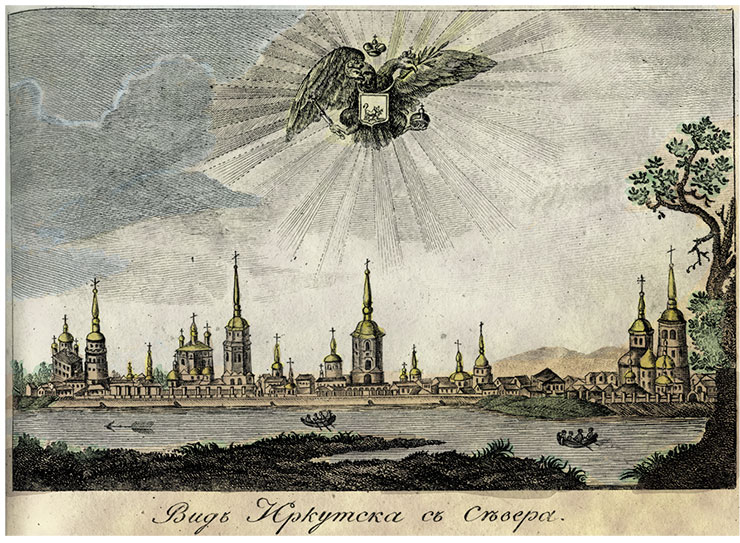
In the third volume of his field journals Travels through Siberia in 1733–1743 (Reise durch Sibirien von dem Jahr 1733–1743), Gmelin gave an excellent portrait of Steller the way he was at the beginning of the journey. “We were very glad that after a short stay here, this talented man showed properly that he was capable of doing such a great deed and offered himself to carry it out. If I had had to make this journey, I must frankly confess that it would have cost much more to Her Majesty. For my studies, I would have taken more people with me, and they would have required more food and, therefore, considerable travel costs.
“No matter how much we told Steller about the terrible hardships awaiting him on these travels – this only made him more determined for that difficult undertaking, for which the journey he had made so far served only as a preparation. He was not at all burdened with clothing. <…> He had but one vessel for drinking, be it beer, honey, or vodka. As to wine, he needed none. He had but one pot, from which he ate and in which he cooked all his meals; he used no cook at all. He cooked everything himself and with such little sophistication that soup, herbs and beef were put at once in the same pot and thus boiled. In his working room, Steller could very easily tolerate the fumes from cooking.
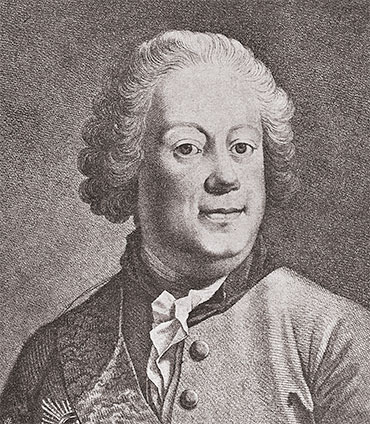 “He used neither wigs nor powder, and every boot or shoe fit him. Never troubled by hardships, he was always in a good mood, and the more confusion there was around him, the more cheerful he became. He had no sorrows, except one, but he wanted to get rid of it; thus, it served him more as an incentive to do his best to forget it.
“He used neither wigs nor powder, and every boot or shoe fit him. Never troubled by hardships, he was always in a good mood, and the more confusion there was around him, the more cheerful he became. He had no sorrows, except one, but he wanted to get rid of it; thus, it served him more as an incentive to do his best to forget it.
“We also noted that, despite his haphazard way of life, he was, however, exceptionally accurate and tireless in all his observation enterprises; so in this respect, we had no worries at all. He could easily stay hungry all day long, without food and drink, when he could do something for science.”
In fact, this is all we know objectively about Steller. As an adjunct of the Academy with the Kamchatka Expedition, he was paid 660 rubles a year (Lomonosov received only 360 rubles in the same position in St. Petersburg) while the student Krasheninnikov, who carried out research in Kamchatka independently, was paid 100 rubles only. But Steller left his young wife, who returned to the capital and who spent most of his salary; hence, perhaps, his modest way of life and his search for risk and adventure – as a way of making and saving money.
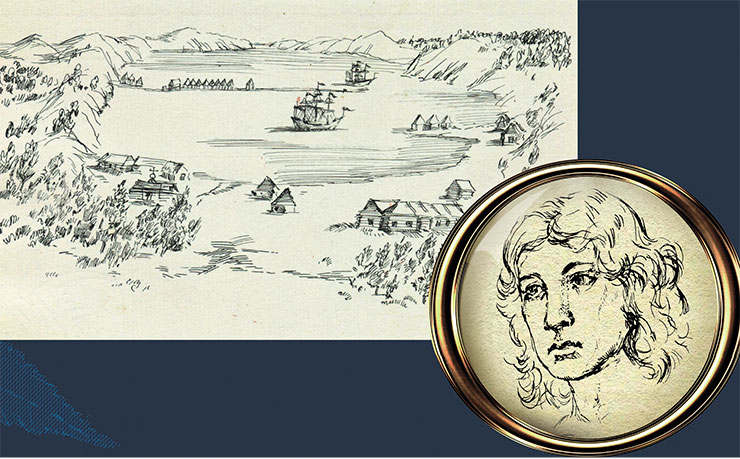
The academicians commissioned Steller to explore Kamchatka together with Krasheninnikov. The latter had been working there for two years: in the summer of 1737, he set out for Kamchatka from Yakutsk after three years of joint work with Gmelin, having separated from the other members of the expedition.
“Insatiable longing to travel to foreign lands and examine their condition and wonders”
On March 23, 1739, Steller arrived in Irkutsk, where he made several trips to Lake Baikal and the Vitim River. He also traveled to the city of Kyakhta, the main center of the Russian–Chinese trade, to obtain Chinese paper, necessary for mounting herbarium specimens. He did all that on his own initiative, reporting his plans to St. Petersburg only.
Steller saw himself an independent envoy of the Academy and considered it below his dignity to obey the long instructions given by the prim Gmelin. The latter believed, in turn, that Adjunct Steller was only a little higher in position than a student but much lower than the “noble professors.” Gmelin’s opinion of Steller changed for the worse, and they would never be on good terms ever again.
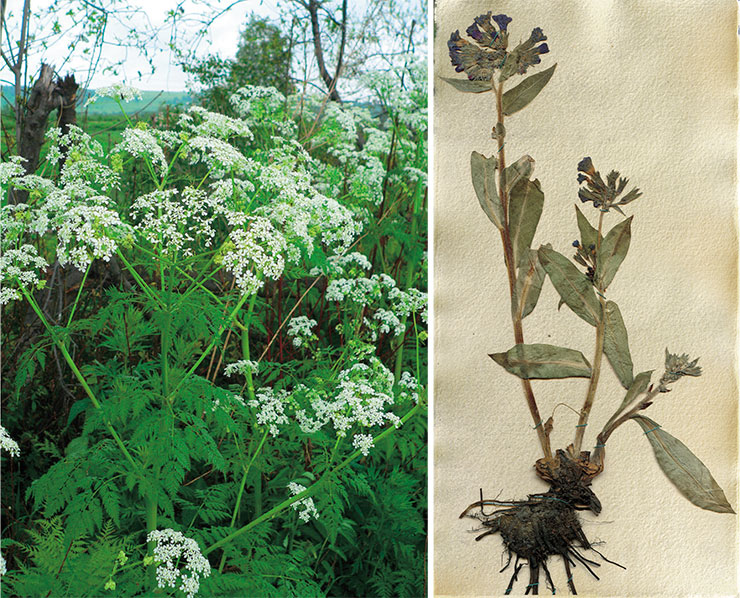
G. W. Steller: “Aschelhut (in both languages) is a variety of myrrhidis and is called morkovnik (‘carrot herb’) by the Cossacks because its flower stems taste like carrots. The stems of this plant are harvested in June; they are fermented like cabbage, and the decoction serves as a drink instead of kvass; the stems serve as a substitute for cabbage or vegetable seasoning”
G. W. Steller: “In April and May, the Votyaks (Udmurts) cook lungwort (Pulmonaria) and then drink the decoction together with the herb. They call the herb Zusni pisni”
The young naturalist showed his importance in every possible way. In one of his reports to the Senate, he asked for a pay rise to the academic level for himself and the painter Johann Christian Berckhan in view of the great difficulties ahead. In the same report, he pointed out the need for money to support the students Krasheninnikov and Gorlanov, who were conducting independent research. “Stepan Krasheninnikov and Aleksandr Gorlanov were young when they left St. Petersburg [Krasheninnikov was only two years younger than Steller], and now they are of adult age, and from the salary of 100 rubles assigned to them, they could neither buy food nor hire horses if I did not support them out of my own money.”
We can only guess what the relationship was between Krasheninnikov and Steller. According to the instructions issued by the academicians, Krasheninnikov was to join Steller’s team and hand over to him all the materials collected in Kamchatka. Subsequently, Steller made extensive use of these data; on the other hand, Krasheninnikov himself subsequently used all the collected materials on the flora and fauna of Kamchatka in his Description of the Land of Kamchatka.
And yet, Steller’s arrogance was getting in the way of him exploring the vast territory. Everywhere he would see rivals of his discoveries, who would envy the successes he had not made yet. He began to devise secret projects for the Senate and the Holy Synod in which he, respectively, proposed to improve governance in Kamchatka by building new ostrogs (stockaded settlements) and suggested the easiest ways to convert Kamchadals to the Christian faith. Perhaps, this way he tried to strengthen his authority in the expedition team and become an equal partner to the recognized professors.
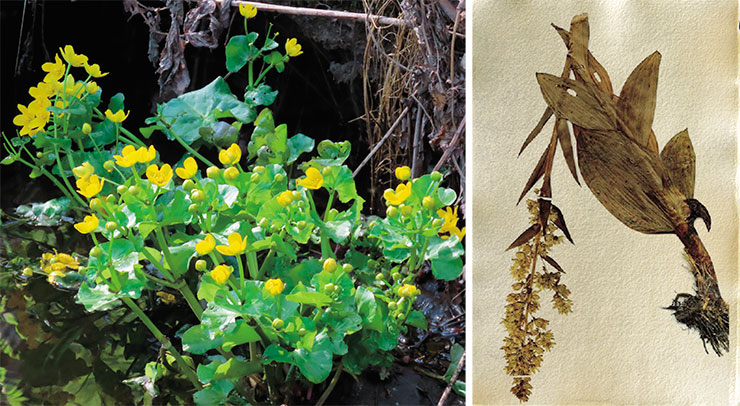
G. W. Steller: “Kadahod or itkha on the Bolshaya River, called the “swan root” in Russian, is the root of the Populagine plant. In the spring, the natives collect it in streams and springs, put it in wooden troughs, pour water onto it, and boil it by putting red-hot stones into the water. I myself have eaten it boiled with meat, or seasoned with vinegar and vegetable oil instead of salad; it tastes almost the same as asparagus. When eaten fresh, these roots cause inflammation of the throat”
According to the instructions, Steller was supposed to stay in Okhotsk and Kamchatka as a naturalist and describe “… everything pertaining to natural and political history and make physical and meteorological observations in all places where appropriate.” But his restless nature longed for more.
As early as in the spring of 1740, on his way to Kamchatka, he wrote a report to the Senate with a request that “… if, beyond expectation, Captain Herr M. P. Schpanberg [head of a separate detachment of the Second Kamchatka Expedition, who was sent to explore the Japanese coast and make an inventory of the Kuril Islands and the Amur River] is sent to Japan the second time, then he would like to be sent with him” (precisely at this time he also sent a request for a pay rise). Later, having learned that Captain Commander Vitus Bering, Head of the Second Kamchatka Expedition, was about to sail in search of the American coast, he sent another letter to the Senate where he wrote about his “insatiable longing to travel to foreign lands and examine their condition and wonders…” and about his agreement with Bering.
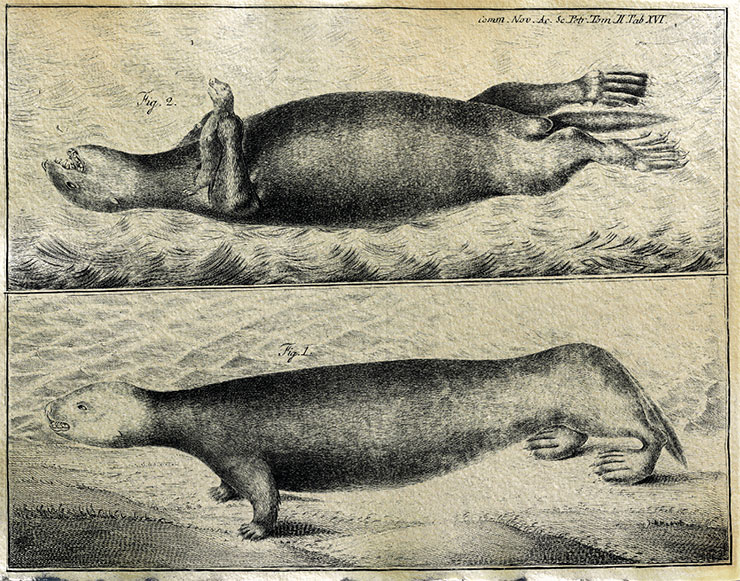
It was a sensitive situation: having received permission to travel to the South Kuriles and without waiting for a response from the Senate, Steller eventually set sail for the American coast. This decision of his fully revealed the scientist’s adventurist nature.
…The autumn of 1741 saw yet another cosmic intertwining of events. On September 25 that year, the great Carl Linnaeus read his first lecture at his native Uppsala University. In the same September, Stepan Krasheninnikov, who had finished his work in Kamchatka, got married in Yakutsk to the daughter of the local voevoda (governor). And in the same autumn, Steller began to fulfill his main destiny, namely, to become the first scientist to visit the northwestern coast of North America, which later became known as Russian America.
Sailing beyond the horizon
Summoned by Captain Commander Bering, Steller arrived at the Petropavlovsk Harbor to participate in the sea voyage. He was deeply insulted by the way the commander himself and the senior officers received him. Bering, a product of the era of Peter I, was a very tough man and considered Steller, a scientist, as a burdening nuisance. In turn, Steller immediately wrote a complaint to the Senate, where he repined at Bering for not receiving him according to his rank and not listening to his advice.
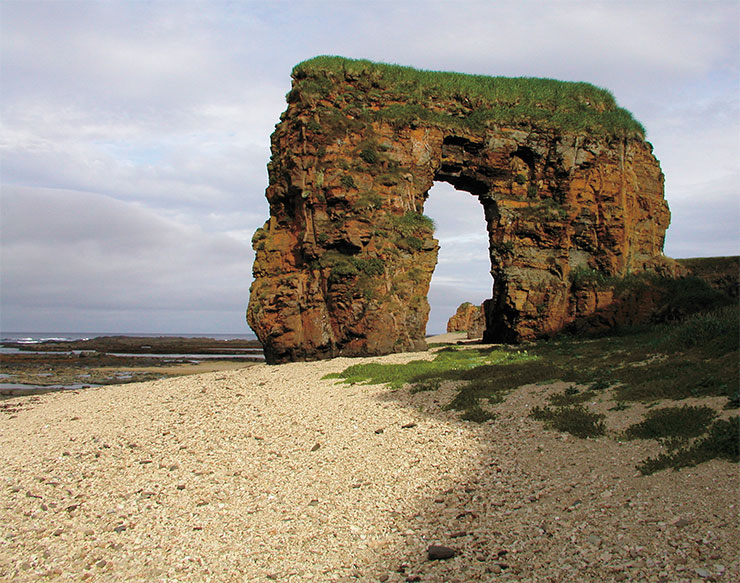
Nevertheless, on June 4, 1741, an event occurred that European naturalists had been dreaming of throughout the 18th century: the scientist set off on the packet ship St. Peter for unknown lands. And it was Steller who first saw America on July 15. He wrote about that in his journal: “…it [the land] was not so visible that it could be clearly delineated, it was, as usual dismissed as something peculiar to me. But the next day, in very clear weather, it was sighted in the very same spot. At that location the land was highly elevated. A mountain range we saw extending inland was so high that out at sea it was clearly visible from 16 German miles” (Steller, 1988).
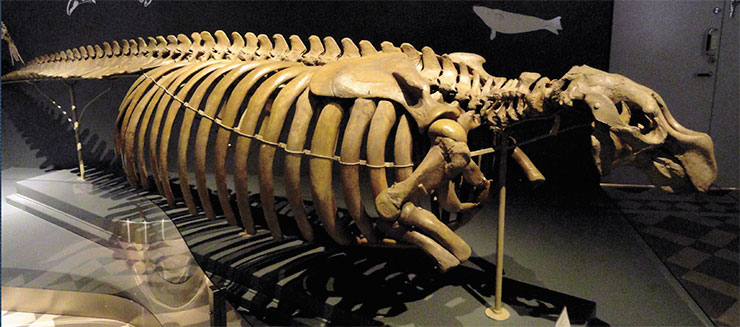
The skull is no different from that of a horse, but when still covered with skin and flesh, it resembles the head of a buffalo, especially the lips. Instead of teeth, it has two wide bones in its mouth, one of which is attached to the upper palate, and the other from the inside to the lower jaw. Both of them have many crooked furrows and protruding ridges, with which they grind seaweed, their usual food…
A full-grown animal weighs about 80 hundredweight, or 200 Russian pud [about 3.3 tons]…
The fat is not oily but stiff and white as snow; when exposed to the sun for a few days, it becomes yellow like the best Dutch butter. Its odor and flavor are so agreeable that we drank bowls of it without any disgust. The tail consists mostly of fat. The flesh of calves resembles young pork; the flesh of adults is just like veal. When boiled, it soon becomes tender, and if the boiling is continues it swells up so that it takes up twice as much space in the pot as it did before boiling. The flesh of old animals is not easy to distinguish from beef… We soon experienced its healing nutritional properties, especially those of us who suffered from the implications of scurvy
The next day, the ship finally reached the American coast. However, it took Steller a lot of complaining, threatening, and quarreling to be allowed to work for as little as a few hours on the Kayak Island, located in the Gulf of Alaska. In a great hurry, he collected plants and household items of American residents left on the shore. However, everything that he collected there perished in the subsequent vicissitudes.
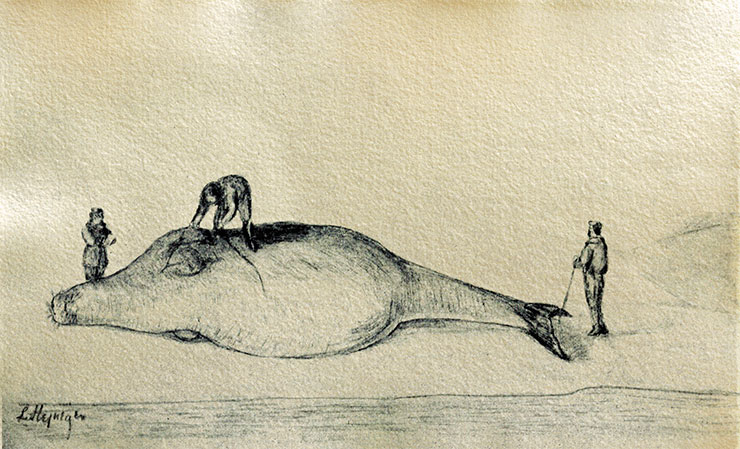
That year, the travelers could not return to the harbor of Petropavlovsk-Kamchatsky. Throughout September and October, the sea was very stormy, and the sailors and Cossacks suffered from scurvy, and the captain commander himself was seriously ill. On November 5, they saw a land resembling in outline the coast of Kamchatka and entered the bay not caring about anything, as Steller would write. However, it was not the mainland but an unknown island, which would later be named after Bering. This way they began their most difficult wintering, which led to the death of both Bering himself and many members of his crew.
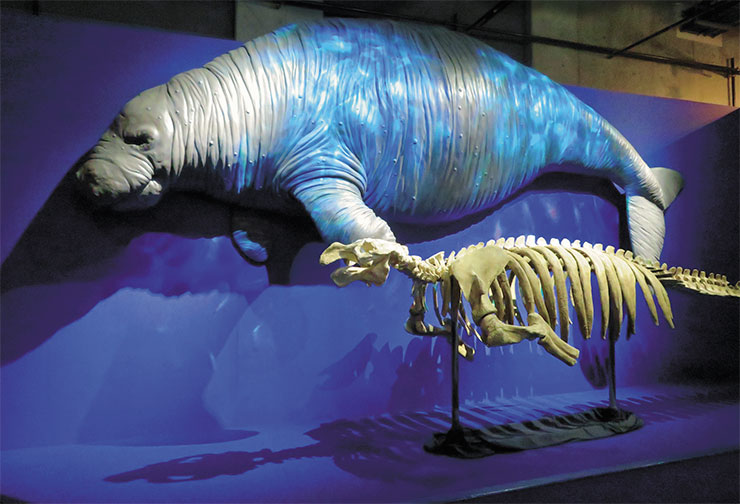
However, accustomed to a Spartan life, the naturalist did not lose heart – he served both as a doctor, alleviating the suffering of the sick and supporting the healthy, and a cook. Lieutenant Sven Waxell from Bering’s crew described him as follows: “Of great service to us was Adjunct Steller, an excellent botanist, who collected plants and showed us various herbs; from these we prepared tea, which brought noticeable benefits to our health. I can testify with complete certainty that none of us fully recovered until he began to eat and generally use fresh plants, herbs, and roots” (quoted from Waxell, 1940).
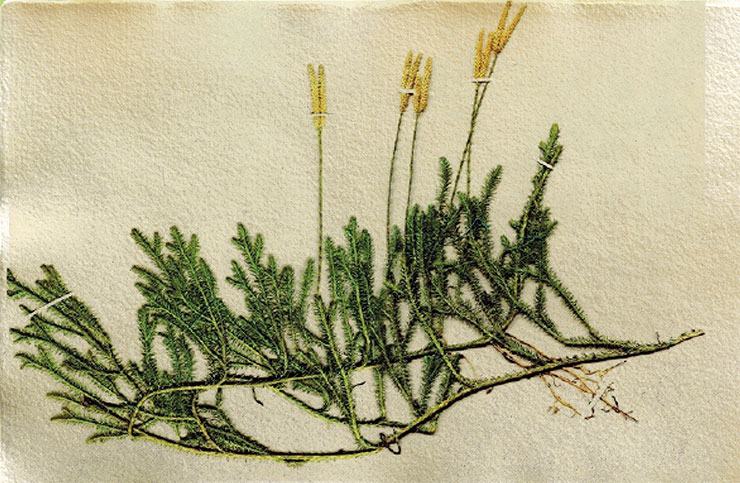
G. W. Steller: “Sarana in the Tatar language, augch in Itelmen, is a part of the bulb of Turk’s cap lilies… All these bulbs are of high value among by the Kamchatka people; they eat them both raw and cooked with fish. The natives cook pies or cakes out of them; make puree, called salamat in Russian; fry them in fish oil. Every year they make considerable stocks of them, which they dry in the sun”
Even in these circumstances, Steller did not stop his scientific work. The Archives of the Russian Academy of Sciences in St. Petersburg keep two of his manuscripts on the flora of the Commander Islands: A Catalogue of Plants on Bering Island Observed in 1742, which describes 218 species, and A Description of Rare Plants on Bering Island Observed in 1742, which includes 51 species.
The gift of the gods for the Russian sailors was the Kapustnitsa, or ‘weed eater’, an animal that would later be called Steller’s sea cow. Steller was the only scientist who had a chance to see this marine mammal alive. The sea cow had a large size and tasty meat, and it was a very easy prey. As Steller wrote, “there is so large a number of these animals about this one island that they would suffice to support all the inhabitants of Kamchatka.” However, meeting the European man turned out to be a tragedy for this unique animal. Perhaps, it was Steller’s words that led to the full extermination of the population of sea cows near the Bering Island.
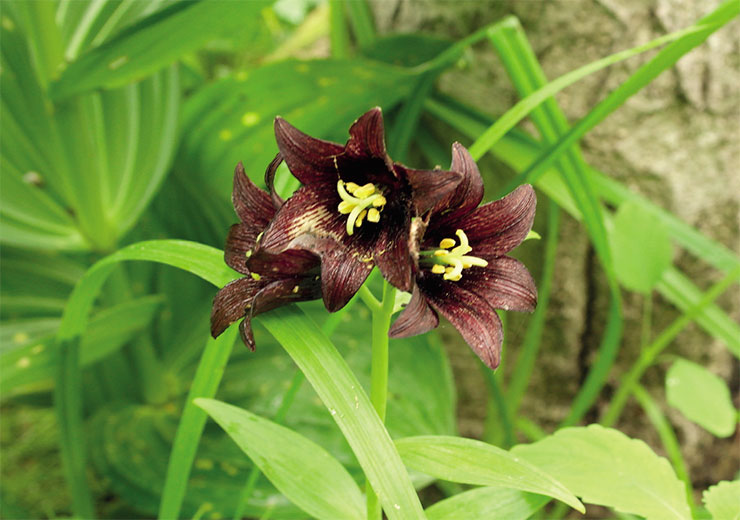
There was no hope that anyone would come to rescue Bering’s crew from the uninhabited island, so the voyagers built a new ship from the remains of the old one, destroyed by storms, and in the spring of 1742, they returned to Kamchatka, where they were believed to have long been dead. And even this time, Steller delivered a herbarium he had collected.
The fatal number of seven and thirty
Having returned from the voyage, Steller continued his scientific studies and went on several journeys to collect a large body of factual material. On August 3, 1744, he sent 16 boxes with various items of natural history, with an instruction that the boxes be sealed and not opened until St. Petersburg. However, the boxes were not sealed, and in Irkutsk, the academicians opened the boxes and sent the luggage further in their own name.
Obviously, this time the tensions between Steller and the academicians reached their peak. As for Stepan Krasheninnikov, Steller categorically demanded him to hand over all the materials on Kamchatka, which he had been collecting for four years.
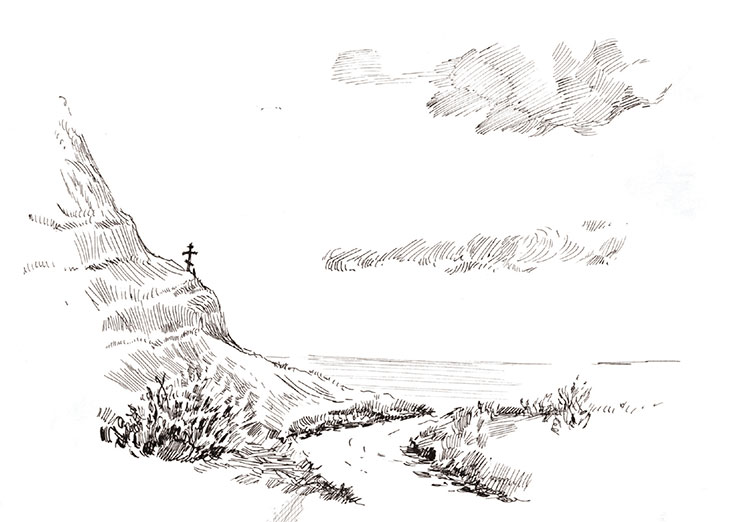
Krasheninnikov was certainly much more experienced than Steller. Flesh from the flesh of the Russian people, he not only possessed the knowledge of a naturalist but also knew well the customs and life of the Kamchatka people. In this regard, Steller’s judgments were, to put it mildly, incompetent. Consider, for example, his recommendation to the Yakutsk administration that the Russians in Kamchatka could do without bread at all, eating only local fish and the roots (bulbs) of sarana (Turk’s cap lily). Steller believed that this nutrition practice could be quickly put into use with compromising people’s health. Giving this advice, Steller referred to his own experience since “he had no boredom eating the food of local custom.”
The scientist traveled a lot around Kamchatka and visited Russian ostrogs. Quick-tempered, he often tried to help local people, who were drugged and robbed by Russian officials and merchants. For instance, he testified against midshipman V. A. Khmelevsky, known for his cruelty towards the Kamchadals. In response, the midshipman also sent denunciations against Steller, in which he made accusations that he personally released from the Bolsheretsky Ostrog the Kamchadals that had allegedly instigated a revolt against the Russians.
Steller gave his explanations at the Irkutsk Chancellery at the end of 1745, and they were considered sufficient. But by some peculiar incident of the Russian bureaucracy, the Senate did not receive the necessary papers from Irkutsk and ordered to begin a new investigation.
G. W. Steller: “Kutkunu is a plant on the Bolshaya River, one foot high, with three leaves growing from one center; above it, on an inch-long stalk, a white flower, like in Herba paris, appears, whose pistil turns into an oval juicy fruit, resembling a walnut and filled, like the Jewish cherry, with many small white seeds. This plant flowers in June and bears fruit in September; it abounds in Kamchatka and has a pleasant sweetish-sour taste. Eating its fruit leads to a very restful sleep. The Itelmens call its fruits apples because of their resemblance to the latter”On March 25, 1746, Steller, who was already on his way to St. Petersburg, was escorted, by decree of the Senate, under guard from Solikamsk back to Irkutsk. These cities stand at a considerable distance, and in the 18th century, such a journey could take several months. But while the Senate’s courier was escorting Steller back to Irkutsk, the documents from Irkutsk with evidence of Steller’s innocence reached the Senate. So another courier was immediately dispatched and caught up with Steller in the town of Tara.
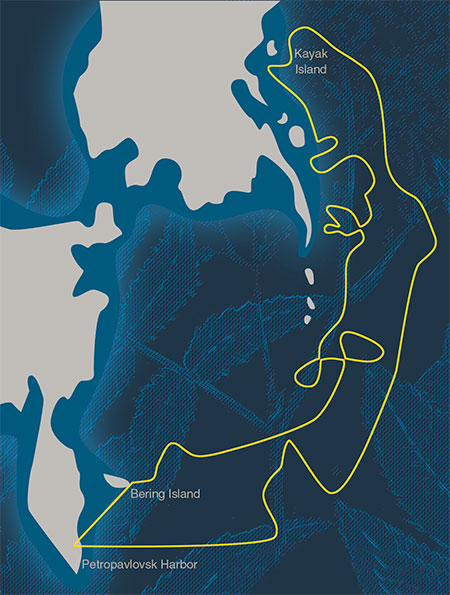 Now it was possible for him to return to St. Petersburg, where his young wife was waiting (or no longer waiting) for him. Steller set out hastily for the capital, but in Tobolsk he showed signs of a fever. Not listening to advice and not wanting to delay, he decided to reach Solikamsk, but he failed.
Now it was possible for him to return to St. Petersburg, where his young wife was waiting (or no longer waiting) for him. Steller set out hastily for the capital, but in Tobolsk he showed signs of a fever. Not listening to advice and not wanting to delay, he decided to reach Solikamsk, but he failed.
On November 12, 1746, Steller died in Tyumen at the age of 37. Two German doctors were present at his death and disposed of his belongings. Or, in other words, “they profited from Steller’s belongings and contributed a lot to the vague rumors about his death” (Pekarskii, 1870). Indeed, there were rumors as the German publisher J. B. Scherrer, who was the first to publish Steller’s Description of the Land of Kamchatka, told the story that drunken yamshchiks (sledge drivers) forgot him in the sledge, where he froze to death. But this version does not stand up to criticism since Steller left a will before his death. Moreover, bearing in mind the characterization given of him by Gmelin, this could hardly be true.
What was the cause of death of the talented natural scientist who had not fully realized his potential? Was it pneumonia, which one can easily get when traveling in late autumn, or did he not recover from the accusations and had a nervous stroke? We will never know.
Thus ended the bright yet short life path of one of the most mysterious and underestimated naturalists in Russia. Despite all the difficulties of the path as well as the ardor and certain unrestraint unsuitable for an academic man, Georg Wilhelm Steller accomplished a lot. He is remembered mostly as a zoologist, but he was primarily a botanist.
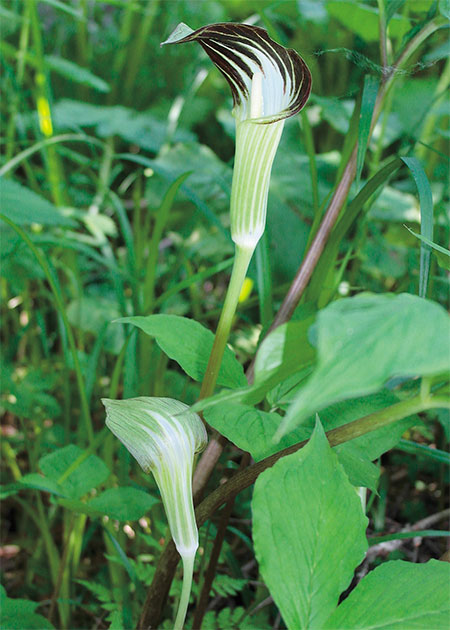 Back then it was very expensive to pursue this science. There was no paper, so plants were transported in any manner possible: either as seeds or as live specimens. In the last report to the Senate, Steller wrote bitterly: “A great many of my rare growing things and bushes, which I collected by instruction with great difficulty, perished on the road, and in the spring, I was forced to either throw them all away or stay in Solikamsk, to which end I found Herr Demidov’s gardens useful, as well as the diligent oversight of his gardens” (quoted from Pekarskii, 1870).
Back then it was very expensive to pursue this science. There was no paper, so plants were transported in any manner possible: either as seeds or as live specimens. In the last report to the Senate, Steller wrote bitterly: “A great many of my rare growing things and bushes, which I collected by instruction with great difficulty, perished on the road, and in the spring, I was forced to either throw them all away or stay in Solikamsk, to which end I found Herr Demidov’s gardens useful, as well as the diligent oversight of his gardens” (quoted from Pekarskii, 1870).
Indeed, 80 most valuable exotic plants collected by Steller remained in the Demidov Botanical Gardens. After the scientist’s demise, Grigori Demidov took care of them. There is a handwritten note by Carl Linnaeus, which tells us about the fate of Steller’s natural science collections: “The plain folk took his collections and sold them to Demidov, who then sent me everything so that I write the names with the permission to take a doublet of every specimen” (quoted from Lipshitz, 1947–1952). This is how the connection between the two great naturalists of the 18th century came into being.
The fact that Steller was an outstanding botanist is also evidenced by the impressive list of his manuscripts, which includes Flora of Perm with a Description of Many Herbs, Addition to Dr. Gmelin’s Flora of the Lena River, Flora of Irkutsk on 90 sheets, A Description of Herbs Growing between Yakutsk and Okhotsk, A Description and Register of Kamchatka Herbs, etc.
During his lifetime, Steller did not see a single line of his works printed, and some of them were completely lost. It is only in recent decades that his works have been published and translated, ever more frequently, and an interest has been growing in Steller himself, both as a scientist and as a person, in his tragic yet covetable fate.
References
Anisimov, E. V. Timelessness and Timeservers. Recollections of the Era of Palace Coups (1720s–1760s). Moscow: Terra, 1996. P. 192–253 [in Russian].
Kupriyanov, A. N. At the Intertwining of Times and Fates: “Father of Botany” Johann Georg Gmelin // SCIENCE First Hand. 2022. V. 61. N 2. P. 24–47.
Panfilov, A. M. Moving Beyond the Horizon, or a Prayer for Overcoming // SCIENCE First Hand. 2007. V. 18 N 6. P. 42–51.
Pekarskii, P. History of the Imperial Academy of Sciences in Petersburg). St. Petersburg, 1870. V. 1. P. 431–457 [in Russian].
Steller, G. W. Journal of a Voyage with Bering, 1741–1742. Stanford University Press, 1988.
Steller, G. W. Treatise of Folk Medicine by Georg W. Steller, with an introduction by T. A. Lukina (translator) // SCIENCE First Hand. 2010. V. 25. N 1. P. 64–85.
Steller, G. W. Description of the Land of Kamchatka. Petropavlovsk-Kamchatsky, 2011 [in Russian].
Waxell, S. The Second Kamchatka Expedition of Vitus Bering. Leningrad–Moscow: Glavsevmorput’, 1940 [in Russian].


